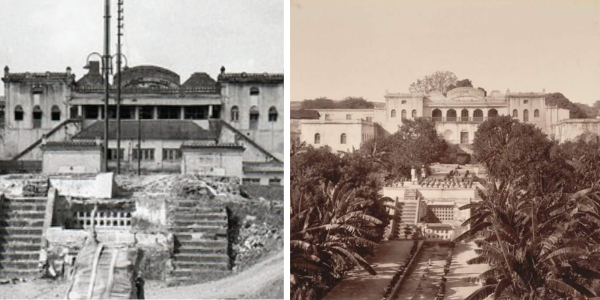Qila-e-Ark is an historical monument at the historical city of Aurangabad, Maharashtra. Although Aurangabad is extremely rich of historical elements. But the Quila-e-Ark history, has its own distinct importance. Tragically, despite of all historical importance, the 17th century fort palace is now turned into ruins. But the glimpses of imperial Mughal pride in the city of Aurangabad is yet to be overturned.
The citadel complex of Aurangabad has a very few structures surviving today. The gigantic Naubat Darwaza, Dilli Darwaja and Makkai Darwaja and few other structures are good enough to mark the Badshahi glory. Inside the complex, a Shahi mosque and a palatial monument are two prestigious structures still surviving. Few local organizations, however, are still trying to protect the auspicious Mughal heritage and draw the goverment attention.
History of Qila-e-Ark
Prince Aurangzeb, the son of Mughal emperor Shah Jahan, had a long attachment with Aurangabad. In fact, Aurangabad city got its name from Mughal prince Aurangzeb only. After the Mughal empire acquired the Deccan region, Aurangabad became its capital. Emperor Shah Jahan appointed prince Aurangzeb the governor (1653-58) of Deccan province. The Mughal prince was inititally staying at Qila Naukhanda at Aurangabad. But he was always looking to build his own palace.
Prince Aurangzeb had ordered for construction of his citadel palace, immediately after his deputation to Aurangabad. Finally in 1656 CE, the Qila-e-Ark was constructed. Quila-e Ark became the palace of the Mughal prince. Aurangzeb had very short stay during his initial deputation. Political circumstances changed very quickly at Delhi. Aurangzeb moved to Delhi in 1658 and ascended the Mughal throne.

The Quila-e-Ark is deeply associated with Aurangzeb’s life history. After 1683, the Mughal emperor shift premanently to Aurangabad to manage his losng sustaining campaign against the Mughals. He managed his campaigns from the famous Daulatabad fort. But the Qila-e-Ark again became his imperial stay. As a result, Aurangabad too became the virtual capital of Mughal empire. The Quila-e-Ark also got a great significance in Indian history, along with Aurangabad city. Badshah Aurangzeb had built the Shahi mosque inside the complex in 1693, which is still surviving.
The Nizams of Hyderabad had turned the Quila-e-Ark palace into a government college. But later the college was shifted from the complex. Indian archaeological showed some interest initially to protect the heritage site. But after 1971, none of the goverment bodies took responsibility to protect the Mughal heritage unfortunately.
Architecture and key structures
Quila-e-Ark undobtedly featured an astonishing fortified palace architecture of Mughal style. But historians and archaeologists could hardly determine anything from the collapsed monuments. A 12 feet wide fortified wall sorrounds the entire complex of Quila-e-Ark. But majority of the wall has now collapsed. Some part of walls were also damaged in 2022 during some district administrative work (news report).

Alamgir mosque or Shahi Masjid of Quila-e-Ark connects to history of Aurangzeb’s stay at Aurangabad. Badshah Aurangzeb had built the mosuqe in 1693, for his personal use. The mosque is however still surviving today.

Zenana Mahal is the another notable structure inside the Quila-e-Ark complex. Emperor Aurangzeb had build the palace for women of the royal family, which is also in ruins today.
Mardana mahal and the Durbar has completely collapsed. Few entrance gates are still surviving today. Delhi gate, Makkai gate and Naubat gate are most notable among them.




